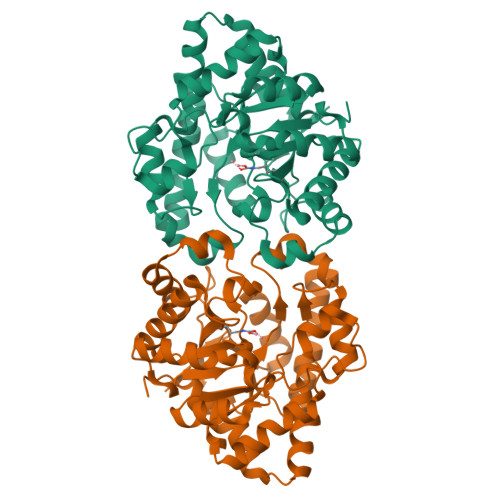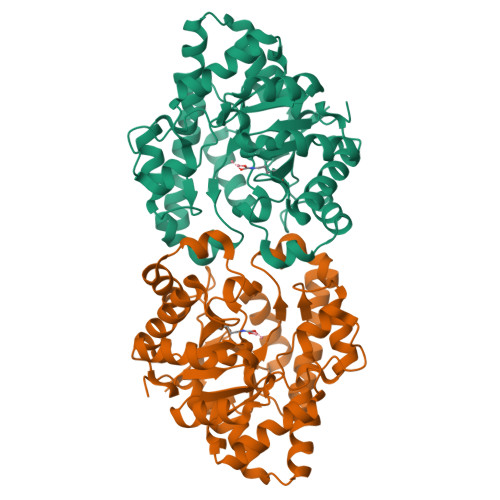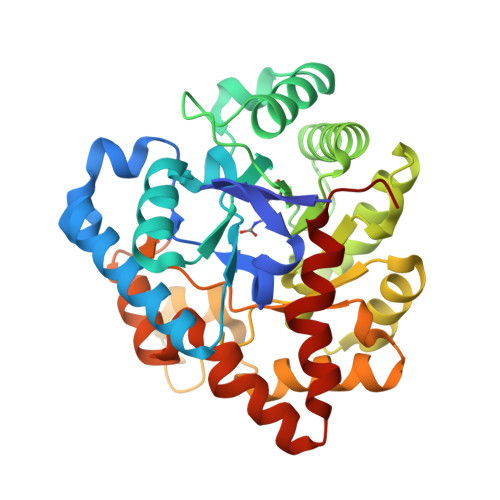Variants of Phosphotriesterase for the Enhanced Detoxification of the Chemical Warfare Agent VR.
Bigley, A.N., Mabanglo, M.F., Harvey, S.P., Raushel, F.M.(2015) Biochemistry 54: 5502-5512
- PubMed: 26274608
- DOI: https://doi.org/10.1021/acs.biochem.5b00629
- Primary Citation of Related Structures:
4ZST, 4ZSU - PubMed Abstract:
The V-type organophosphorus nerve agents are among the most hazardous compounds known. Previous efforts to evolve the bacterial enzyme phosphotriesterase (PTE) for the hydrolytic decontamination of VX resulted in the identification of the variant L7ep-3a, which has a kcat value more than 2 orders of magnitude higher than that of wild-type PTE for the hydrolysis of VX. Because of the relatively small size of the O-ethyl, methylphosphonate center in VX, stereoselectivity is not a major concern. However, the Russian V-agent, VR, contains a larger O-isobutyl, methylphosphonate center, making stereoselectivity a significant issue since the SP-enantiomer is expected to be significantly more toxic than the RP-enantiomer. The three-dimensional structure of the L7ep-3a variant was determined to a resolution of 2.01 Å (PDB id: 4ZST ). The active site of the L7ep-3a mutant has revealed a network of hydrogen bonding interactions between Asp-301, Tyr-257, Gln-254, and the hydroxide that bridges the two metal ions. A series of new analogues that mimic VX and VR has helped to identify critical structural features for the development of new enzyme variants that are further enhanced for the catalytic detoxification of VR and VX. The best of these mutants has been shown to have a reversed stereochemical preference for the hydrolysis of VR-chiral center analogues. This mutant hydrolyzes the two enantiomers of VR 160- and 600-fold faster than wild-type PTE hydrolyzes the SP-enantiomer of VR.
Organizational Affiliation:
Department of Chemistry, Texas A&M University , College Station, Texas 77843, United States.




















